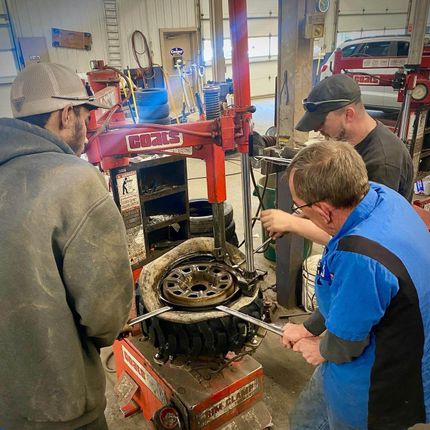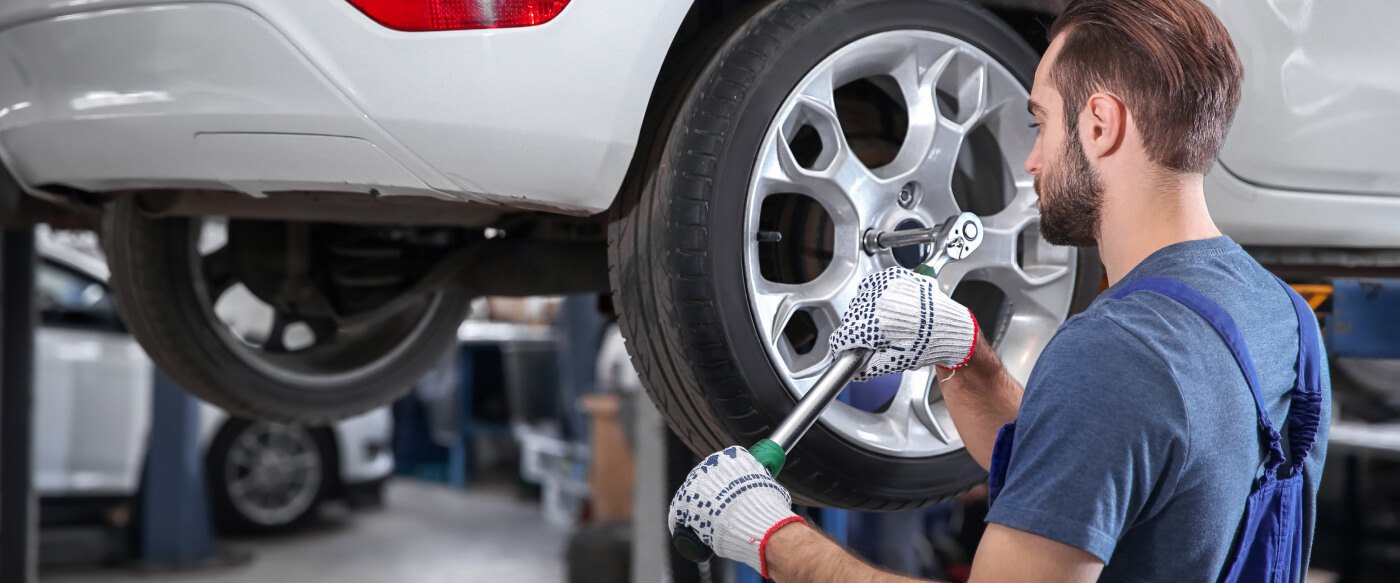Boost Your Drive: Top-Notch GMC Tires Service at Morris Tires
Boost Your Drive: Top-Notch GMC Tires Service at Morris Tires
Blog Article
Tire Solution: The Effect of Weather
When it concerns making sure ideal performance and security when driving, understanding the effect of climate condition on tire service is important. From scorching warm to icy roadways, each climate component can dramatically affect tire capability and overall driving experience. By delving right into the impacts of varying climate conditions on tires, motorists can gain valuable understandings that might enhance their car's efficiency and long life. In this discussion, we will certainly discover the detailed relationship between weather and tire solution, losing light on the significance of weather-specific tire maintenance techniques and considerations.
Heat and Tire Efficiency
When revealed to high temperature levels, tires experience adjustments in performance that can considerably influence lorry security and handling. The warm produced from extended driving or warm weather condition conditions creates the tire rubber to soften, leading to reduced step life and enhanced wear.

Cold Weather Condition Impacts
Cold climate problems can have a considerable effect on tire performance and safety and security. As temperatures drop, tire rubber can set, causing decreased grip on icy or snow-covered roads. In winter, tires may additionally lose atmospheric pressure extra quickly, which can influence taking care of and gas efficiency. Additionally, cold temperature levels can cause tire sidewalls to tense, increasing the danger of damages from splits or various other roadway hazards.
To minimize the results of chilly weather on tires, it is important to regularly check tire pressure and inflate them to the producer's advised levels. Making use of winter season or all-season tires created for winter problems can also improve traction and grasp on icy or snowy roadways. Appropriate tire maintenance, consisting of normal assessments for wear and damages, comes to be much more important throughout colder months to ensure ideal performance and safety and security.
Rainy Issues Influence
During rainy problems, tire efficiency and security can be substantially influenced by the wet road surfaces and decreased presence. The walk pattern of tires plays a crucial duty in preserving traction on wet roads. Tires with worn-out footsteps are a lot more prone to hydroplaning, where a layer of water builds up between the roadway and the tire surface, bring about loss of grip. To combat this, drivers need to frequently inspect click reference their tires for adequate walk depth and take into consideration purchasing tires particularly designed for damp conditions.
In addition, stormy weather condition can likewise decrease exposure, making it challenging for motorists to see the road in advance plainly (GMC Tire Service). In such conditions, it is crucial to change driving speeds as necessary and maintain a risk-free complying with distance to permit unexpected quits. Appropriately filled with air tires can also aid in preserving control on damp roadways by offering far better handling and grasp
Snow and Tire Security
Snow-covered roadways position special difficulties for vehicle drivers, highlighting the importance of proper tire selection and maintenance. When driving in snowy problems, having the appropriate tires can make a considerable distinction in safety and security and efficiency. Winter months tires are made with unique rubber compounds and step patterns to offer better traction on snow and ice contrasted to all-season tires. The much deeper treads and sipes of wintertime tires aid grip the roadway better, decreasing the danger of sliding and gliding.

In weblink addition, chauffeurs should think about installing tire chains in severe snowy conditions. Tire chains give additional traction by clutching the snow and ice, improving stability and control. It is essential to adhere to maker instructions when utilizing and mounting tire chains to prevent damages to the tires and vehicle (GMC Tire Service). By selecting the ideal tires, keeping proper inflation, and taking into consideration additional traction help like tire chains, drivers can improve their safety when navigating snow-covered roadways.
Weather-Related Tire Maintenance
When confronted with different climate problems, correct tire maintenance ends up being a critical element of vehicle security and performance. Weather-related tire maintenance incorporates a variety of methods aimed at ensuring ideal tire feature and longevity in different climate situations. One essential facet of weather-related tire upkeep is tire pressure law. Changing temperatures can create tire pressure to vary, affecting traction and fuel efficiency. Consistently checking and adjusting tire stress according to supplier suggestions is crucial for risk-free driving in changing climate condition. Additionally, tire walk deepness plays a significant role in dealing with different weather condition components. Tires with adequate tread depth provide much better grasp on damp or icy roads, minimizing the risk of skidding or hydroplaning. When tread wear gets to a particular deepness is vital for keeping grip and security in damaging climate, evaluating tire step regularly and replacing tires. By focusing on weather-related tire upkeep, motorists can improve safety and security, improve vehicle efficiency, and extend the life expectancy of their tires.
Conclusion
In conclusion, weather condition conditions have a substantial effect on tire performance and security. From heat impacting tire stress and use to chilly weather reducing grip, it is necessary to think about the climate when maintaining and utilizing tires. Stormy conditions can decrease hold and lead to hydroplaning, while snow can raise the danger of crashes if tires are not correctly furnished. Weather-related tire upkeep is vital in ensuring ideal efficiency and security when traveling.
In this conversation, we will certainly explore the elaborate connection in between weather problems and tire service, losing light on the importance of weather-specific tire upkeep methods and considerations.

Report this page